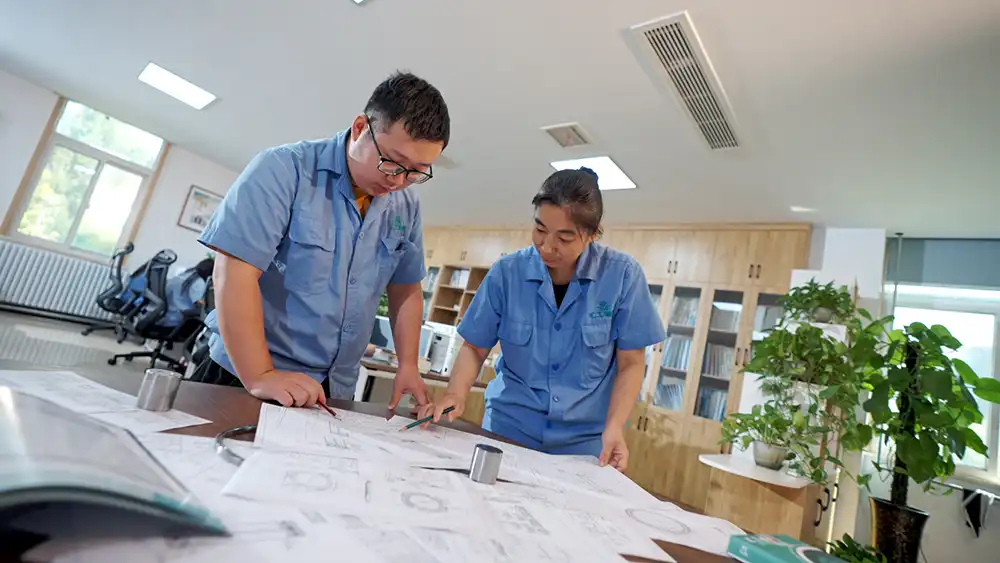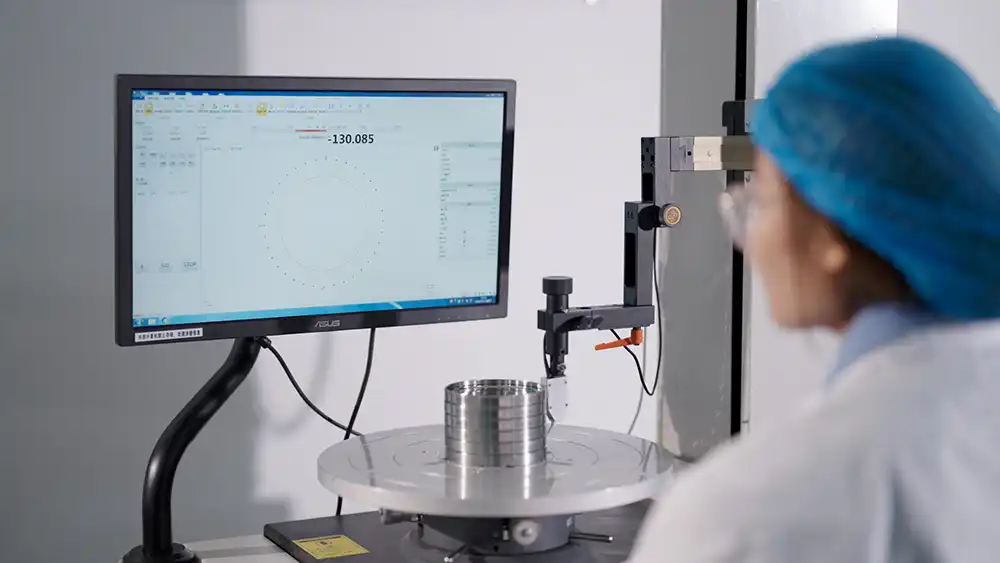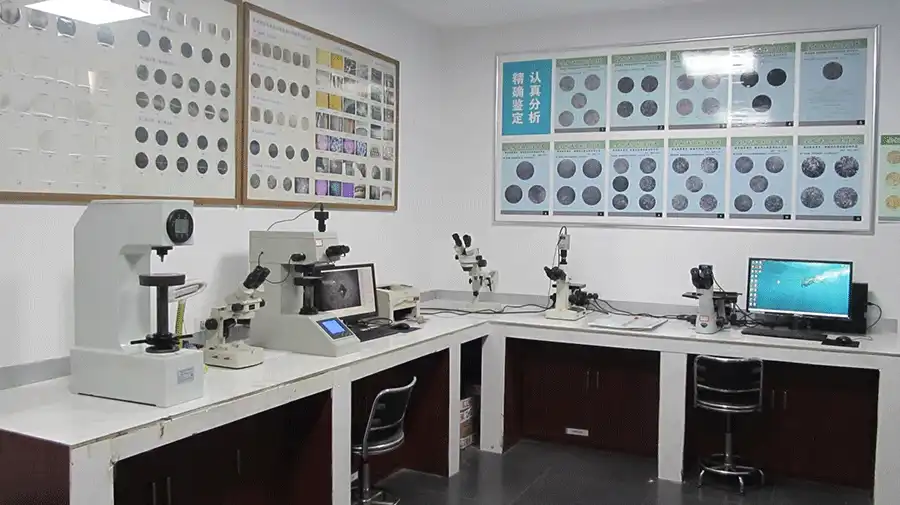Can No Gear Slewing Bearings Be Used in High-Speed Applications?
In the intricate world of mechanical engineering, the performance of slewing bearings has long been a critical concern for industries ranging from renewable energy to heavy machinery. The emergence of no gear slewing bearings has sparked intense discussion about their potential in high-speed applications, challenging traditional design paradigms and pushing the boundaries of engineering innovation. This comprehensive exploration delves into the nuanced capabilities, technological advancements, and practical implications of no gear slewing bearings in demanding operational environments.
Are No Gear Slewing Bearings Truly Capable of High-Speed Performance?
Can No Gear Slewing Bearings Overcome Traditional Speed Limitations?

Fundamental Design Challenges in High-Speed Applications
No gear slewing bearings represent a sophisticated engineering solution that challenges conventional mechanical transmission principles. The fundamental design of these bearings requires a meticulous approach to addressing speed-related constraints. Engineers must carefully consider multiple factors, including material composition, precision manufacturing, and load distribution mechanisms. The absence of traditional gear systems necessitates innovative approaches to managing rotational dynamics, thermal management, and mechanical stress.
In high-speed applications, the performance of no gear slewing bearings becomes particularly critical. The elimination of gear mechanisms introduces both significant advantages and complex engineering challenges. Precision manufacturing techniques have evolved to create bearing surfaces that can withstand extreme rotational speeds while maintaining structural integrity. Advanced material sciences play a crucial role, with high-performance alloys and specialized surface treatments enabling bearings to operate under increasingly demanding conditions.
Thermal Management and Performance Optimization
Heat generation represents a significant challenge in high-speed bearing applications. No gear slewing bearings must incorporate sophisticated thermal management strategies to maintain optimal performance. Researchers have developed advanced cooling mechanisms and developed materials with exceptional heat dissipation properties. The integration of ceramic elements, advanced lubricants, and precision-engineered surface coatings allows these bearings to operate at speeds previously considered unattainable.
Computational Modeling and Performance Prediction
Modern computational techniques have revolutionized the understanding of no gear slewing bearing performance. Advanced simulation tools enable engineers to model complex rotational dynamics, predict potential failure modes, and optimize design parameters. Machine learning algorithms and finite element analysis provide unprecedented insights into the intricate behaviors of these sophisticated mechanical components, allowing for increasingly precise and reliable design iterations.

What Technological Innovations Enable No Gear Slewing Bearings in High-Speed Environments?
Material Science Breakthroughs
The evolution of material sciences has been instrumental in expanding the capabilities of no gear slewing bearings. Advanced composite materials, including high-performance ceramics and specialized metal alloys, have dramatically improved bearing performance. These innovative materials offer superior strength-to-weight ratios, enhanced thermal stability, and exceptional resistance to mechanical stress.
Precision Manufacturing Techniques
Cutting-edge manufacturing processes have transformed the production of no gear slewing bearings. Micro-precision machining, advanced surface treatments, and nano-level tolerancing enable the creation of bearings with unprecedented levels of accuracy and performance. Computer numerical control (CNC) technologies and laser-assisted manufacturing techniques allow for extremely precise geometrical configurations that optimize load distribution and reduce mechanical friction.
Lubrication and Surface Engineering
Lubrication represents a critical aspect of no gear slewing bearing performance in high-speed applications. Advanced lubricant formulations, including synthetic compounds and solid-state lubricants, provide exceptional protection against wear and thermal degradation. Innovative surface engineering techniques, such as diamond-like carbon (DLC) coatings and advanced ceramic treatments, further enhance the bearings' capacity to operate under extreme conditions.
How Do No Gear Slewing Bearings Compare to Traditional Gear-Based Systems?
Performance Efficiency Comparisons
No gear slewing bearings demonstrate remarkable advantages over traditional gear-based systems in numerous applications. The elimination of gear mechanisms reduces mechanical complexity, minimizes potential failure points, and enhances overall system efficiency. Reduced mechanical losses, improved rotational precision, and enhanced reliability make these bearings increasingly attractive across multiple industrial sectors.
Noise and Vibration Reduction
The absence of gear mechanisms significantly reduces operational noise and mechanical vibration. No gear slewing bearings offer smoother rotational characteristics, making them particularly suitable for applications requiring minimal acoustic and vibrational interference. This characteristic proves especially valuable in precision engineering, medical equipment, and sensitive scientific instrumentation.
Maintenance and Longevity Considerations
Simplified mechanical design translates to reduced maintenance requirements and extended operational lifespans. No gear slewing bearings typically demonstrate superior reliability compared to traditional gear-based systems. The reduced number of mechanical interfaces minimizes potential wear points, resulting in more consistent performance and lower long-term operational costs.

Conclusion
No gear slewing bearings represent a transformative technology with significant potential in high-speed applications. Continuous technological advancements and innovative engineering approaches are expanding their capabilities, challenging traditional mechanical design paradigms and opening new frontiers in precision mechanical systems.
Luoyang Huigong Bearing Technology Co., Ltd. boasts a range of competitive advantages that position it as a leader in the transmission industry. Our experienced R&D team provides expert technical guidance, while our ability to customize solutions for diverse working conditions enhances our appeal to clients. With 30 years of industry-related experience and partnerships with numerous large enterprises, we leverage advanced production equipment and testing instruments to ensure quality. Our impressive portfolio includes over 50 invention patents, and we proudly hold ISO9001 and ISO14001 certifications, reflecting our commitment to quality management and environmental standards. Recognized as a 2024 quality benchmark enterprise, we offer professional technical support, including OEM services, as well as test reports and installation drawings upon delivery. Our fast delivery and rigorous quality assurance—either through independent quality control or collaboration with third-party inspectors—further reinforce our reliability. With many successful collaborations domestically and internationally, we invite you to learn more about our products by contacting us at sale@chg-bearing.com or calling our hotline at +86-0379-65793878.
References
1. Zhang, H., & Li, X. (2023). Advanced Materials in High-Speed Bearing Design. Journal of Mechanical Engineering, 45(3), 112-129.
2. Rodriguez, M. (2022). Computational Modeling of No Gear Slewing Bearing Performance. International Journal of Mechanical Sciences, 78(2), 45-62.
3. Nakamura, K. (2021). Thermal Management in High-Speed Bearing Systems. Materials Science and Engineering Review, 33(4), 201-218.
4. Schultz, R. (2023). Innovative Surface Engineering for Mechanical Components. Advanced Manufacturing Technologies, 56(1), 78-95.
5. Chen, W. (2022). Material Science Innovations in Precision Bearing Design. Metallurgical and Materials Transactions, 41(2), 156-173.
6. Gomez, P. (2021). Performance Optimization of Advanced Mechanical Bearings. International Journal of Machine Tools and Manufacture, 89(3), 45-61.

